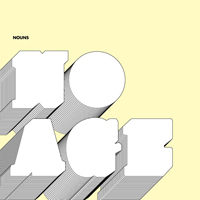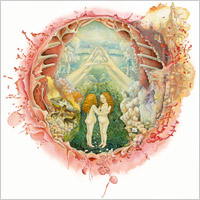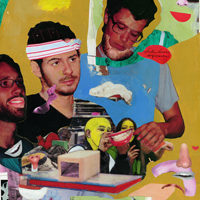“Filler music,” my father explained, “are songs nobody wants to hear. But the record companies put the songs on albums to fill out the extra space between the hits—the songs people really want to hear.”
I was eight or nine, it was a Sunday, and my mom was at church, which meant my dad was free to play his LPs on the living-room stereo. My mother hated pretty much every kind of music except Johnny Mathis. She especially disliked Neil Diamond.
Over the speakers, “Hurtin’ You Don’t Come Easy” gave way to “Sweet Caroline.”
Spotting filler, I have learned, is easy. Some of the common offenders: It’s a cover version thrown together before lunch. It’s a hook-less jam session named after someone who, the liner notes will not reveal, is the band’s dealer. It’s one of the artist’s hits (or worse, somebody else’s), but with changed lyrics and two chords transposed.
The primary symptom of a bad album, filler makes it easy to assess a year’s worth of recordings, narrowing it down to a final list of the best 10. Especially when your primary criterion is that it has no bad songs on it.
Because when you locate the number of albums without moments you skip, you reach the ballpark of 10. Keep honing away, shaving off the less-perfect gems, and you’ve got the best 10 albums of the year. It’s not just taste—it’s about math. And the great thing about math is there’s only one right answer. So here’s that.

10. Why?, Alopecia
To be fair, it’s always hard out there for a hip-hop/indie-rock artist. After all, the two go together like almond butter and carob. But hear me out: If hip-hop is the poetry of the streets, and the streets of indie-rock are the hipster enclaves of Brooklyn, San Francisco, etc., then shouldn’t hip-hop/indie-rock comment on the pastiche of lives therein?
Here’s some science, with ample name-dropping: “Hiding from my friends in the bathroom at Thrift Town / to write this tune down.” Or: “Today after lunch I got sick and blew chunks / all over my new shoes in the lot behind Whole Foods.” And most impressively: “Don’t pretend / you didn’t see me coming around the bend / on my fixie with the chopped points turned in / trailing behind your biodiesel Benz.” It’s representing an admittedly gentrified block, and it’s about time this particular moment were recorded so accurately.

9. No Age, Nouns
The two-piece No Age is further proof that the number of people in a band is inversely proportionate to the amount of energy they create. It’s something to do with overcompensating for perceived lack of volume and noise created by the missing members. Just watch: Someday they’ll add a third person to the lineup and it’ll seem OK at first, like it’s really filled out their sound—but that will just open the door to the inevitable fourth and fifth members. So appreciate the band now, before they add a dog that can play the tambourine and you’re telling everyone that yeah, a monkey with a whistle could really take them new places, but they used to be so much better.

8. Deerhunter, Microcastle
This year, great-grand-shoegazers My Bloody Valentine reunited for a series of concerts, 18 years after their last album, the guitar feedback opus Loveless, was released. Given the speed with which the shows sold out and the deafening praise from those concertgoers who didn’t bring earplugs for the band’s nausea-inducing finale, it’s a good time for music with effects pedals. Likewise, Deerhunter takes direction from late-’80s and early-’90s British indie rock. But it’s no shoegazer retread: Microcastle is what music would sound like today if everyone hadn’t stopped making it in order to make grunge. So let’s look at this as a correction of the markets, right? Which is also very 2008.

7. Department of Eagles, In Ear Park
On the surface, Department of Eagles has two problems. One, the band name includes the word “Eagles”—and I had a rough night and I hate the fuckin’ Eagles, man. The other problem, and this is minor really, is the similarity certain vocals bear to vocals in certain songs by Steely Dan. Despite this one-two, double-Don punch of Henley and Fagan, Department of Eagles prevails, and how. It’s indelible and haunting, and not at all in the way one might associate with ghost transmissions stuck in the ether from a long-gone ‘70s radio station.

6. Crystal Castles, Crystal Castles
Recommended if you like: lurking in the dark corners of cigarette-smoke-lined Toronto video arcades. Known for its questionable relationship with the “chiptune” community (which reverse-engineers Game Boys into musical instruments), Crystal Castles shines brightest when they go off-script, strip away their Mario and Luigi coveralls, and pound on some melody-heavy electronic tunes in the vein of the mighty (and mightily underappreciated) Fischerspooner.

5. Islands, Arm’s Way
Brooding, orchestral pop with frequent appearances from the most brooding of orchestral instruments: the bass clarinet. Bass clarinetists, after all, cannot help but brood. Their instruments fallen into disrepair, buzzing keypads buttressed with masking tape. When pecking orders are decided, the hulking bass instruments (which look like saxophones crossed with clarinets crossed with starting-to-date-much-later-than-everyone-else) are thrust into untalented and too-small hands and sent to the rear of the orchestra, where flubbed notes are dampened, and where many bass clarinetists find they can toot their own tunes.
Your average bass clarinetist is going to run on the acid side of life, and that’s in strong evidence on this year’s entry from Islands.

4. Portishead, Third
Eleven years after their last studio albums, both Portishead and Verve released new records in 2008. Neither had forgotten how many notches they had in their respective belts: Verve anointed its comeback Forth (pun!), yet unlike Verve—who may fare better on Fifth—Portishead made the return of the year with Third. Though outside Beth Gibbons’s hopeful wanderings throughout the upper register, very little is recognizable of Portishead’s prior, trip-hop sound. In fact, 11 years of studio silence has resulted in the band’s best work ever; we hope it was worth the wait for them as much as it was for us.

3. Of Montreal, Skeletal Lamping
The tracklist shows 15 songs on Skeletal Lamping, but that’s misleading. Given Kevin Barnes and co.’s concept here—which is to pack three or four completely different songs into each track—if you don’t like the song, just wait a minute and it’ll change. What’s happening, it seems, is that each song is taken as far as it can realistically go, and after every conceivable angle is explored—which can take one minute, or five and a half—the song meets its natural end and we move onto something else completely. Rather than being gimmicky or feeling schizophrenic, it’s more like the anti-R. Kelly, who knows no edit.

2. White Denim, Exposion
First off, White Denim is neither a metal act, nor an ‘80s revival band, nor some combination thereof. I know, I know, I thought the same thing. It happens to everybody. Now that’s out of the way, let’s discuss what White Denim is: the most aggressively—and appealingly—experimental rock band of the year. It’s jump-up rock and roll. No wait, now it’s banjified southern art rock. Now it’s Tortoise watercoloring! And now it’s Roxy Music jamming with Gang of Four. Suffice to say, writing about White Denim will give you a headache. The only thing that will cure it is listening to White Denim.

Album of the Year: Beach House, Devotion
The answer is simplicity in everything: an economy of instrumentation, where the imagination of the arrangements propels the music above and beyond everything else. The distance between the best album of the year and the others is immeasurable. Unquantifiable. It takes you someplace you never knew about, but always hoped to go. On Devotion, that place is somewhere by a sea, up a mountain, at night, after a cloudless day. Victoria Legrand’s purposeful tenor floats over delicate, half-speed arrangements. Again, we are talking simple here. We are talking about percussion that prominently features snaps. We are talking about 1980s Mexican restaurant drum machines.
Beach House does a lot with a little because you don’t need a lot to do a lot, Axl.
What’s fun to do in these year-end reviews is to wonder what the artist will do next. After all, seeing how this album was so full of so many good and strong songs, what levels will their next outing bring? As it happens, Beach House has already shown us with a single this fall, “Used to Be,” which reveals the band already reinventing itself. Still simple, the arrangements remain as good and strong as on Devotion, just better and stronger.

